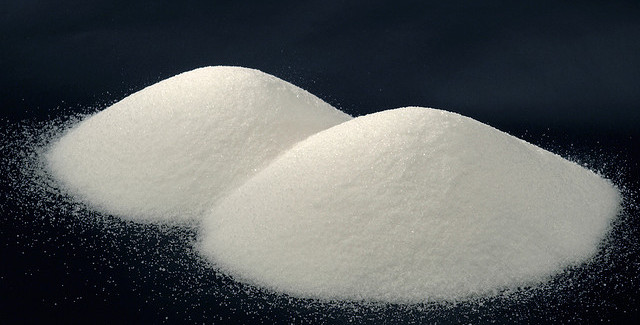
Are Our Kids Overdosing on Salt?
New research from the Centers for Disease Control and Prevention (CDC) published in the journal Pediatrics indicates roughly seven in 10 toddler meals contain excess levels of sodium, and most snacks, breakfast pastries and cereal bars for infants and toddlers have extra sugars. What’s a parent to do? We asked Dr. Sarah de Ferranti, MD, MPH, Director of Preventive Cardiology Program and Assistant Professor of Pediatrics, Harvard Medical School, and member of the American Academy of Pediatrics’ Committee on Nutrition, for her thoughts on the study. We also reached out to Carolyn O’Neil, MS, RD, for tips on what to feed our kids.
The study analyzed foods specifically marketed to toddlers and found that most toddler dinners and many toddler snacks contained almost 1.5 times higher levels of sodium per serving than what is recommended by the Institute of Medicine. What can parents do to reduce their child’s sodium intake?
Dr. de Ferranti:
When you buy processed or packaged foods, read the nutrition panel carefully. Look for products labeled “low-sodium” or “no salt added.” Remember that sodium levels can vary among similar products – sometimes even within the same brand. According to the study published in Pediatrics, for example, CDC researchers found that sodium levels in toddler meals ranged between 100 mg per serving and 950 mg per serving. An easy tip for parents is to focus on the amount of sodium per serving. Those foods with less than 140 mg per serving are considered low in sodium.
Even better, consider limiting how often you buy processed or packaged foods. We all have times when we need to eat packaged foods – when traveling, on the go – but remember, fresh foods with few ingredients are usually low in sodium. And when you are able to cook at home, minimize the amount of salt and sugar you use during preparation and try adding herbs, spices or citrus instead.
Also, foods high in sodium are often high in added sugar, such as prepared cookies and salty snacks. Instead, start your infant or toddler’s meals with fruits and vegetables without added salt, added sugar, or sauces. Even if they don’t take to them at first, keep trying – as the parent, you know what’s best for your child.
Don’t hesitate to ask your pediatrician for additional guidance on healthy foods and tips to feed infants and toddlers. Serving kids foods with high sodium and sugar content puts children at greater risk for obesity and future cardiovascular disease, so healthcare providers are invested in helping ensure a healthier outcome for kids.
Carolyn O’Neil:
As a registered dietitian, I encourage parents to prioritize feeding their kids fresh whole foods such as fruits and vegetables with meals and for snacks, and choose packaged foods and snacks carefully. Read the Nutrition Facts label to compare sodium and sugar content. The good news is that there are many more packaged food products today that take healthfulness for children very seriously and there are more on the market now, compared to 2012 when the CDC study was conducted.
It’s important to note that the CDC researchers found that the majority of infant foods were low in sodium. But, there is concern that too many foods marketed for toddlers contain sugar and sodium levels above recommended amounts for good health.
Foods for toddlers should contain no more than about 210 milligrams of salt or sodium per serving, under Institute of Medicine recommendations.
The study’s author, Mary Cogswell, said that roughly one in nine children have higher than normal blood pressure for their age – is this due to consumption of the foods analyzed in the study, or is there some other reason?
Dr. de Ferranti:
This particular study focuses on the sodium content of commercial baby and toddler foods sold in the U.S.; it doesn’t examine the impact of the specific foods on blood pressure. However, previous research has revealed that one in nine U.S. children already has blood pressure above the normal range. In addition, CDC studies have found that 90 percent of school-aged children nationwide eat too much sodium – and it’s happening during every meal, from every setting and from most types of food.
As a doctor, these findings are very concerning. A poor diet in childhood can lay the foundation for future health problems. Obesity is a problem in the U.S. – and statistics reveal one in four children between 2- to 5-years-old and one in three between the ages 6- and 19-years-old are overweight or obese. In addition, we know too much sodium can increase blood pressure, and high blood pressure is a major risk factor for heart disease and stroke. Most importantly, the taste for salt is established during early life, so keeping sodium and sugar intake low early on can help set taste preferences that will support children making healthy food choices later on in life.
The study also found toddler meals and snacks had lots of added sugar, particularly fruit and dried fruit snacks. How much sugar should toddlers be consuming, and how can parents ensure toddlers are meeting dietary guidelines for fruits/veggies without worrying about additional sugar intake?
Dr. de Ferranti:
Although there is no specific scientific data about how much sugar a toddler should eat, the 2010 Dietary Guidelines for Americans recommend reducing the intake of calories from added sugars.
I recommend parents provide their children with fresh or frozen fruits and vegetables that do not contain added salt and sugar early and often. It’s also important for parents to eat similarly healthy meals and snacks, so you set a good example for your kids.
Carolyn O’Neil:
How much is too much added sugar? Note that fruit naturally contains a sugar called fructose. When you dry fruit, the sugar becomes concentrated so is therefore higher than fresh fruit per serving. Dairy products, such as milk and yogurt, naturally contain sugar (lactose) as well. Sugar content can be higher in a product because manufacturers add additional sweeteners to improve the taste. That’s where the sliding scale on too much sugar can begin.
The researchers defined “high sugar” content as more than 35 percent of calories per portion coming from sugar, based on Institute of Medicine guidelines for foods served in schools. Many foods in the CDC study were higher than that.
On average, CDC researchers found that sugar contributed 66 percent of calories in dried fruit snacks, and more than 35 percent of calories in dairy-based desserts such as yogurts. This makes sense since sugar is naturally occurring in these foods, but some toddler-packaged dinners and cereal bars contained added sweeteners including high fructose corn syrup, dextrose and glucose.
Did the study analyze any drinks (fruit juices, soda, etc.), or did it just focus on foods?
Yes, the study did analyze some infant and toddler beverages, categorized as single or mixed fruit juices and drinks. Due to the sugar content, I advise parents to limit the number of juice drinks and sweet beverages they give to their children. Infants and toddlers really shouldn’t ever have soda, energy drinks or sports drinks. Juice drinks should be minimized. The American Academy of Pediatrics recommends limiting 100% fruit juice to less than 4 to 6 ounces a day.
What’s the biggest take-away message from this study for parents?
Dr. de Ferranti:
Since many pre-prepared toddler meals and baby and toddler snacks contain too much sodium or added sugar, it’s important that parents read nutrition labels, compare products and find healthier options. A healthy diet for the entire family, one that is limited in added salt and sugar and rich in fruits and vegetables, can help set the taste preferences of the youngest family members and may ultimately prevent diet-related diseases later in life.
Carolyn O’Neil:
As a registered dietitian, my concern is that we don’t want to ‘train’ our children’s taste buds to expect a super-sugary or salty taste in foods. In fact, their taste buds are much more sensitive than adults’, so they require less ‘sweet’ or ‘salty’ flavors in foods to make them palatable.
Packaged foods designed for kids can be a terrific solution for busy families looking for portability and convenience. Read the Nutrition Facts label to compare salt and sugar content to find the best brands for taste and health.
“Salt-(sea)_B130623” by Dubravko Sorić is licensed under CC BY-2.0.


























